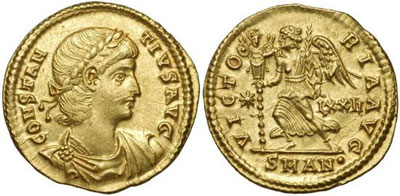There are many sources which explain the sacredness of the palm tree. In his book The Golden Bough (which appears now in full on the Net), Sir James Frazer brings a few cases where the palm had been used in various rituals around the world.
Chapter 5 – The Magical Control of the Weather, § 2 – The Magical Control of Rain: In a time of drought in Christian Europe, “Palm branches, blessed on Palm Sunday, had been hung on the trees. At Solaparuta, in accordance with a very old custom, the dust swept from the churches on Palm Sunday had been spread on the fields” — for fertility purposes, no doubt. It is believed, as the palm tree does not grow in Europe, that the custom was brought there from Palestine with the Crusaders.
Chapter 9 – The Worship of Trees, § 2 – Beneficent Powers of Tree-Spirits: “All through Upper India it is kept in shrines and presented by the priests to women who desire to become mothers. In the town of Qua, near Old Calabar, there used to grow a palm-tree which ensured conception to any barren woman who ate a nut from its branches.”
Chapter 62 – The Fire-Festivals of Europe, § 3 – The Easter Fires: “The ashes of the Easter bonfire, together with the ashes of the consecrated palm-branches, are mixed with the seed at sowing.” This practice implies a power of fertility.
According to the site of Sacred Palm Trees, the palm tree seems to have been very important in ancient Egypt. Besides its being sacred to the ancient pair of gods Heh and Hauhet, who were concerned with the creation, it featured much as part of the Egyptian temples. “The Egyptian temple was conceived essentially as a stone model of the creation landscape. The orders of columns, however, were designed not as direct representations of plant life, but as stone reproductions of idealized landscape features. The palmiform column, which appears already fully developed by the 5th Dynasty (2465 – 2323 BCE) and used constantly for the next 2000 years, shows the palm tree as a circular column as if it were the trunk of a palm tree with the topmost section ornamented with palm leaves shown as if tied with a thong around the column.”
Besides being used as a fertility factor, though, the palm tree was also associated with both victory and peace. In a site on “Lesser Deities” (though I do object to the title “lesser”), it is said that, “Nike, the daughter of Pallas and the Oceanid Styx, was the goddess of victory,” and that “Nike was inseparable from Zeus and Athena.” Some say, though, that Nike was nothing but the victorious aspect of the War goddess Athena herself. In her pictures, Nike appears standing on a globe, draped, winged, and holding a wreath and a palm branch.

Victory advancing left, palm in right hand, trophy in left
A fair parallel to the Greek, virginal and warlike goddess Athena is the Canaanite Anath; and a sister goddess to her is the Phoenician (who were Canaanite in origin) Tanith, who brings us back to what is said in Wikipedia about the Greek connection between that people and the palm tree = Phoenix. That is what is said about that goddess in the site of Canaanite Temple (s. link): “Tanith is a Phoenician goddess and the chief goddess of Carthage (Karta Hadta = the “new town” of the Phoenician, who came from the Canaanite city of Tyre on the eastern shore of the Mediterranean to settle on its North African shore). (She was the goddess) of fertility and of the heavens, including the stars and the moon. This name also appears to be cognate with the Egyptian Tanetu … She was also the palm tree, the tree of life in the Mediterranean desert areas.”
Wikipedia says about her: “Tanith was a Phoenician lunar goddess, worshiped at Cartage as their patron(!) goddess. She was also a heavenly virginal goddess of war, a Mother goddess and a general symbol of fertility.”
Another linguistic connection may be with the Egyptian goddess Neith, about whom it is said in a site of The Guiding Feminine: “She was an ancient goddess of the beginning, the beyond, and the end.” Like Athena, Anath and Tanith, Neith was also a War goddess, as well as a Huntress deity. She was also a very ancient goddess of predynastic period, and is said to have been a “personification of the primeval waters” from which the dry world was created, according to the Egyptian myths. In a site by that name, it is claimed that Neith’s son was Tutu, who was a form of the Air god Shu; but Shu is also said to have been another name of the ancient god Heh, to whom the palm tree was sacred; Heh, god of eternity and the ancient chaotic waters, shared his divinity with his wife Hauhet. Neith, then, was mother to the god Heh, who had a feminine side by the name of Hauhet, and to whom the palm tree was sacred.


The two pictures I can see in this article have been loaded perfectly as I opened my e-mail, so I can’t say much about the problem of this reader.